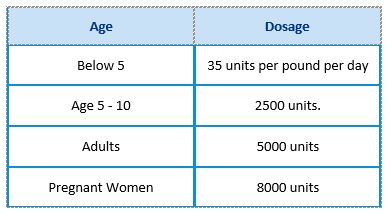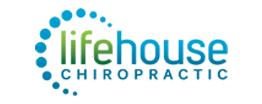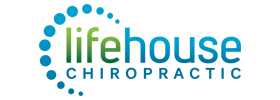Best Protection Against Infections
From The Inside Out

Most Canadians are doing all they can to “flatten the curve” and reduce the risk of exposure to infection. We are washing hands, physically distancing, wearing masks, staying home, disinfecting and sanitizing. We are doing all we can to change the environment to reduce our risk. This is helping, but this is a one-sided approach. Would it not be helpful to consider building up our internal defenses so that we can defend ourselves against this virus and any other viruses and infections that will confront us in the future? There are numerous ways to support and protect ourselves from the inside out, like eating healthy, exercising, drinking water and having a positive mindset. Many have already known how important it is to optimize your vitamin D levels for better health, now many consider it likely to be the easiest, least expensive, most effective strategy for minimizing the risk of infections in the coming weeks and months.
Highlights:
- Most Canadians are vitamin D deficient.
- Optimal levels of vitamin D help reduce the risk of a number of diseases, mental health issues, some forms of cancer and respiratory infections.
- Vitamin D enhances our innate immune systems and prevents our immune systems from becoming dangerously overactive. This means that having healthy levels of vitamin D could patients against severe complications, including death, from COVID-19.
- Most people, including children, in Canada need to supplement.
- To experience the benefits of optimized vitamin D levels while maintaining heart health, it is recommended that you supplement vitamin D3 with vitamin K2.
- Recommended dosage for adults is 5000 IU/day
- Get your vitamin D blood levels checked to be sure.
- Always check with your doctor if you are taking prescription medications.
Most of us in London, Ontario are doing all we can to “flatten the curve” and reduce the risk of exposure to infection. We are washing hands, physically distancing, wearing masks, staying home, disinfecting and sanitizing. We are doing all we can to change the environment to reduce our risk. This is helping, but this is a one-sided approach. Would it not be helpful to consider building up our internal defenses so that we can defend ourselves against this virus and any other viruses and infections that will confront us in the future.
There are numerous ways to support and protect ourselves from the inside out, like eating healthy, exercising, drinking water and having a positive mindset. Many have already known how important it is to optimize your vitamin D levels for better health, now many consider it likely to be the easiest, least expensive, most effective strategy for minimizing the risk of infections in the coming weeks and months.
What is Vitamin D
Vitamin D is actually a steroid hormone made from cholesterol when the skin is exposed to the sun. This is why vitamin D is often referred to as “the sunshine vitamin”. Vitamin D has many important functions. It facilitates the absorption of calcium and regulates the immune system. Getting a sufficient amount of vitamin D is important for normal growth and development of bones and teeth and improves resistance against a number of illnesses and diseases.
Benefits of Vitamin D
Most people know the importance of vitamin D for bone development and absorption of calcium, and how a deficiency can lead to rickets in children, osteomalacia in adults, and osteoporosis in the elderly. [1] [2]
This is just the tip of the iceberg when it comes to the benefits of vitamin D. It is a big influencer on our immune function. It improves immune health and reduces the susceptibility of autoimmune diseases including type 1 diabetes, multiple sclerosis, and Crohn’s disease; [3] it reduces the risk of acute respiratory tract infections; [4] it helps regulate blood pressure and has been used as an adjuvant drug to control the blood pressure for hypertensive patients with vitamin D deficiency; [5] and it positively influences seasonal affective disorder. [6] Recent studies have confirmed an association between cognitive impairment, dementia, and vitamin D deficiency. [7] Vitamin D helps your body’s overall ability to protect against a range of illnesses, including some forms of cancer. There is indication that suggests vitamin D deficiency may account for several thousand premature deaths from the following types of cancer annually, colon, [8] breast, [9] ovarian, [10] and prostate. [11] This discovery creates a new impetus for ensuring adequate vitamin D intake in order to reduce the risk of cancer. [12]
Vitamin D plays a role in inflammation. Low levels of vitamin D failed to inhibit the inflammatory cascade, while levels considered adequate did inhibit inflammatory signaling. [13] The reason this is important, is because viruses, like COVID-19, stimulate an inflammatory reaction. If this overwhelms our system, it could be lethal. Healthy vitamin D levels help to lessen our inflammatory response.
The Coronavirus Vitamin D Connection
One consistent finding among those who have had negative outcomes, severity of symptoms or death from COVID-19 is vitamin D insufficiency. In a study of COVID-19 patients in the intensive care unit in New Orleans, doctors found that 100 per cent of the sickest patients under the age of 75 were deficient in the vitamin. [14]
Researchers analyzed patient data from 10 countries. The team found a correlation between low vitamin D levels and hyperactive immune systems. Vitamin D strengthens innate immunity and prevents overactive immune responses.
This is exactly why vitamin D may have a positive impact on covid10. Not only does vitamin D enhance our innate immune systems, it also prevents our immune systems from becoming dangerously overactive. This means that having healthy levels of vitamin D could protect patients against severe complications, including death, from COVID-19. [15]
"Our analysis shows that it might be as high as cutting the mortality rate in half," according to one of the research team members, Backman.
"It will not prevent a patient from contracting the virus, but it may reduce complications and prevent death in those who are infected."[15]
Previous research has found that vitamin D helps reduce the risk of acute respiratory infection, and a look back to the 1918-1919 influenza pandemic found that those with healthy levels of vitamin D were less likely to die.
There is an increasing amount evidence that suggests low vitamin D may affect how severe COVID-19 will be for an individual. It has not yet been proven that restoring vitamin D to normal levels will help you avoid the virus, but “could possibly improve clinical outcomes of those infected with COVID-19.” [16]
The Problem
It is clear that vitamin D has plays an important role in mechanisms of health and having low vitamin D levels is associated with increased disease, inflammation and susceptibility to infection. The problem is the optimal level of vitamin D is 40 ng, and in a study completed in October 2017, 93% of Canadians do not have optimal levels, this includes adults and children. [17]
Many people work indoors and don’t get outside enough, and because we are told to slather on the sunscreen which blocks our absorption of vitamin D, we rarely get enough vitamin D from sun exposure; therefore, to get enough, a person must include foods high in vitamin D in their diet or supplement.
How to Up your Vitamin D Levels
Sensible sun exposure
- According to Dr. Joseph Mercola, an osteopathic physician [18], to attain acceptable levels of 150-200nmol/L, we need 10-15 minutes of mid-day sun with 40% exposure on a daily basis. For those of us living in southwestern Ontario, this is not possible.
- If you have light coloured skin, stay out in the sun just long enough that your skin turns the very lightest shade of pink or one shade darker is you are dark skinned. This usually occurs within 10-20 minutes of exposure. It is best to slowly build your sun exposure up to this 10-20 minute limit. Always error on the side of caution, and you should never get sunburned!
- Protect your eyes and face.
- Once you’ve reached your daily sun exposure limit, move into the shade, or use a non-toxic lotion with SPF protection. Look for one that includes zinc oxide and/or titanium dioxide, two naturally occurring minerals that will protect your skin form UV rays. For other options and a safe sunscreen guide, visit the Environmental Working Group’s site. [19]
- If you get sunburned, apply pure aloe vera gel.
- Don’t sun bath through a window, the window will not increase your vitamin D levels, but it will still allow UVA rays to penetrate.
- Continuing exposure beyond the minimal dose will not increase your vitamin D production, but it will increase your risk of skin damage.
- The risks associated with insufficient vitamin D are far greater than those posed by skin cancers. [20]
Eat it up. It can be challenging to eat enough of the right foods to get and keep your vitamin D levels high enough to reduce your risk of disease, and you will usually need to supplement. Here is a list of the top seven foods that are high in vitamin D. [21]
- Mushrooms - wild mushrooms are excellent sources of vitamin D2. In fact, some varieties pack up to 2,300 IU per 3.5-ounce (100-gram) serving; commercial mushrooms grown in the dark contain very little vitamin D.
- Wild-caught Salmon - On average, 988 IU of vitamin D per 3.5-ounce (100-gram) serving.
- Cod Liver Oil - 448 IU of vitamin D per teaspoon (4.9 ml).
- Tuna - canned light tuna packs up to 268 IU of vitamin D in a 3.5-ounce (100-gram) serving.
- Herring - 216 IU of vitamin D per 3.5-ounce (100-gram) serving. Pickled herring, sardines, and other fatty fish, such as halibut and mackerel, are also good sources.
- Fortified foods - Foods such as cow's milk, soy milk, orange juice, cereals, and oatmeal are sometimes fortified with vitamin D and may contain 54–136 IU per serving.
- Whole eggs - Eggs from commercially raised hens contain only about 37 IU of vitamin D per yolk. However, eggs from hens raised outside or fed vitamin-D-enriched feed can contain levels up to 7 times higher.
Supplement. There is some evidence that suggests supplementation of vitamin D can be helpful. [22][23] Most Canadians, including children [24] are going to have to use a vitamin D supplement to get your levels to a healthy level. How much vitamin D you need to take will be somewhat dependent on what your diet, age, health status, ethnicity, and where you live.
How to Supplement
- If possible, have your vitamin D blood serum tested twice a year until you know your levels and what it takes to keep it at an optimal level [25]
- Most people have been advised to maintain levels above 50nmol/L to prevent Rickets, yet to be protected from other diseases, it is recommended that you take more than this. This link to a chart shows that levels should be greater than 150 nmol/L to lessen the likelihood of diseases related to Vitamin D deficiency.[26]
- Vitamin D testing often reveals that most people living in Canada need to supplement with 5000 IU for maintenance or 10,000 IU per day until health levels are reached and verified by testing.
- If you are taking oral vitamin D3 supplements, it is wise to take vitamin K2, as well, 100-250 micrograms(mcg)/day. [27][28][29]
- No toxicity was observed at levels below a 25(OH)D serum level of 200 ng/ml (500 nmol/L), and no toxicity was observed in studies reporting a daily vitamin D intake below 30,000 IU. [30]
How Much to Supplement:
Below are Dr. Mercola’s vitamin D dosage recommendations [31] for different age groups, and what I follow for my family and myself:

There is no way to know if the above recommendations are correct for you personally, as they are only guidelines. The ONLY way to know is to test your blood. You might need four to five times the amount recommended above. Ideally, your blood level of 25(OH)D should be 60ng/ml.
Contraindications:
As mentioned previously, most people living in Canada are deficient in vitamin D and would benefit from supplementation; that it is very difficult to over supplement; that no toxicity was observed when taking less than 30,000 IUs daily; (although your health practitioner advises otherwise for specific reasons, daily intake at this or above this level is not recommended); and when supplementing, it is recommended that you take vitamin D3 with vitamin k2 to maintain healthy bones and to experience all the other benefits of vitamin D optimization while maintaining heart health. Although the risk is small, as with all supplements, one needs to be aware of possible interactions when taking vitamin D3 and K2 if you are taking any medications. There are a number of medications that interact with vitamin D3/k2 supplementation. The medications listed are cancer medications and blood thinners. [32]
You may need a dose adjustment, change the time you take your supplement in relation to your medication, or more frequent monitoring by your doctor to safely take your medication and these vitamins. It is important to tell your doctor about all other medications you use, including vitamins and herbs.
Sources:
- https://ods.od.nih.gov/factsheets/VitaminD-HealthProfessional/
- https://www.bones.nih.gov/health-info/bone/bone-health/nutrition/calcium-and-vitamin-d-important-every-age
- https://www.mdpi.com/2072-6643/12/5/1248/htm
- https://www.bmj.com/content/356/bmj.i6583
- https://journals.lww.com/md-journal/fulltext/2019/05100/the_effect_of_vitamin_d3_on_blood_pressure_in.11.aspx
- https://www.nimh.nih.gov/health/topics/seasonal-affective-disorder/index.shtml
- https://www.ncbi.nlm.nih.gov/pmc/articles/PMC3979692/
- https://pubmed.ncbi.nlm.nih.gov/7440046/
- https://pubmed.ncbi.nlm.nih.gov/2720547/
- https://pubmed.ncbi.nlm.nih.gov/7721513/
- https://pubmed.ncbi.nlm.nih.gov/2241107/
- https://pubmed.ncbi.nlm.nih.gov/11920550/
- https://www.sciencedaily.com/releases/2012/02/120223103920.htm
- https://www.medrxiv.org/content/10.1101/2020.04.24.20075838v1
- https://www.medrxiv.org/content/10.1101/2020.04.08.20058578v4https://www.webmd.com/lung/news/20200518/more-vitamin-d-lower-risk-of-severe-COVID-19
- https://www.webmd.com/lung/news/20200518/more-vitamin-d-lower-risk-of-severe-COVID-19
- https://vitamindwiki.com/Optimal+level+of+vitamin+D+is+40+ng%2C+93+percent+of+Canadians+do+not+have+optimal+levels+%E2%80%93+Oct+2017
- https://articles.mercola.com/sites/articles/archive/2012/03/26/maximizing-vitamin-d-exposure.aspx
- org
- https://cjasn.asnjournals.org/content/3/5/1548.full
- https://www.healthline.com/nutrition/9-foods-high-in-vitamin-d#2
- https://www.bmj.com/content/356/bmj.i6583
- https://articles.mercola.com/sites/articles/archive/2020/06/22/vitamin-d-deficiency-research-paper.aspx
- https://healthykidshappykids.com/2020/04/04/pediatricians-pandemic-immune-support-plan/
- https://www.grassrootshealth.net/
- https://www.grassrootshealth.net/document/disease-incidence-prevention-chart-in-ngml/
- https://www.ncbi.nlm.nih.gov/pmc/articles/PMC5613455/
- https://www.mercola.com/article/vitamin-d-resources.htm#:~:text=And%20vitamin%20D%20and%20K2,and%20improve%20your%20heart%20health.&text=The%20optimal%20ratios%20between%20vitamin,200%20micrograms%20of%20vitamin%20K2.
- https://www.healthline.com/nutrition/vitamin-d-and-vitamin-k#section3
- https://www.grassrootshealth.net/document/vitamin-d-toxicity/
- https://www.mercola.com/article/vitamin-d-resources.htm#:~:text=And%20vitamin%20D%20and%20K2,and%20improve%20your%20heart%20health.&text=The%20optimal%20ratios%20between%20vitamin,200%20micrograms%20of%20vitamin%20K2
- https://ods.od.nih.gov/factsheets/VitaminD-HealthProfessional/
CONVENIENT
OFFICE HOURS
Give us a call and let's find out how we can make your time in our office as convenient for you as possible.
Monday
7:30am - 11:00am
3:00pm - 6:00pm
Tuesday
3:00pm - 6:00pm
Wednesday
7:30am - 11:00am
3:00pm - 6:00pm
Thursday
3:00pm - 6:00pm
Friday
7:30am - 11:00am
Saturday
Closed
LifeHouse Chiropractic
520 Springbank Drive #4
London, ON N6J 1G8
Phone (519) 204-9460
Fax (519) 601-9461




